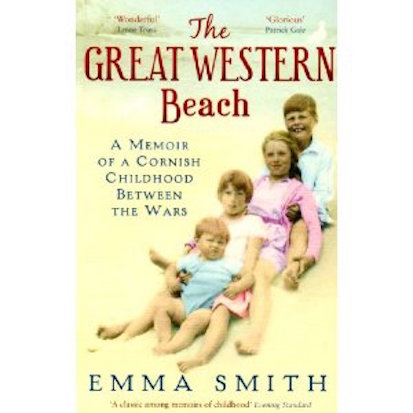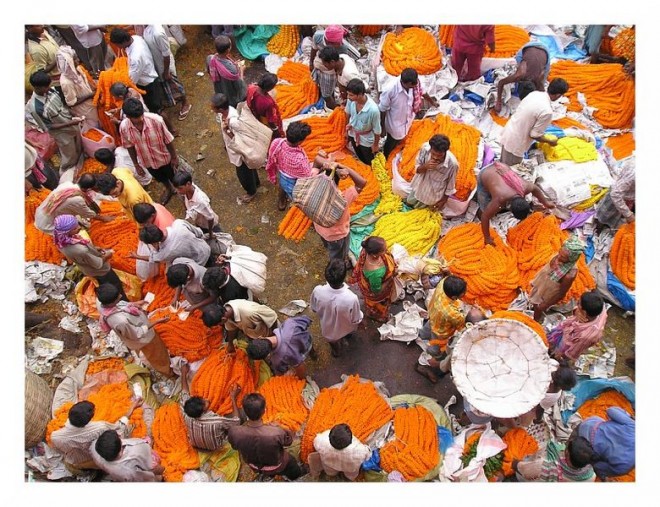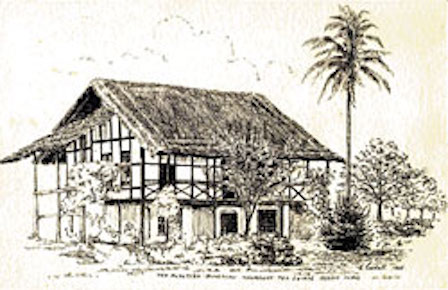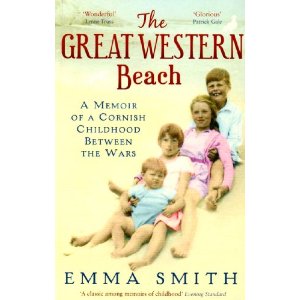In 2008 The Great Western Beach: a Memoir of a Cornish Childhood was published to considerable critical acclaim. It was the first major work by Emma Smith since The Far Cry was awarded the James Tait Black Prize as the best English novel of 1949: nearly sixty years during which the typewriter, perched on her knees in the famous Robert Doisneau photograph, was brought out only for occasional newspaper articles and four novels for children. It is no exaggeration to say that the success of the Persephone reprint of The Far Cry in 2002 was the impetus for the writing of the Memoir. Perhaps it is no exaggeration either to suggest that the The Far Cry revived memories not only of her visit to India as a young woman, but also of her own childhood, of her damaged, disappointed and cruel father, of the wretchedly unhappy marriage of her parents, and even of the adored maid Lucy who provided the ‘glue’ so sorely lacking the Hallsmith family (Emma Smith was born Elspeth Hallsmith).

‘That Teresa, the child at the centre of the tale, had a good deal of me in her personality I was not then able to perceive and would have hotly denied,’ she writes in the Preface, before admitting, ‘but indeed, how could it have been otherwise?’ The memoir concludes, ‘O my parents, my poor tragic parents – my good and beautiful, brave, dramatic, unperceptive mother; my disappointed, embittered, angry, lonely, talented father.’ The Great Western Beach of the title provided some solace – the sea and beach picnics offering moments of warmth and family unity – but Emma’s was not a happy childhood, Teresa Digby’s even less so.
A lonely fourteen year old girl, Teresa is cared for (in a manner of speaking) during holidays from her boarding school by an elderly spinster aunt who dislikes her. At school she is unpopular with the staff and the other girls alike. The staff find her sullen; she is not sly, and ‘nothing at a girls’ school’, Emma Smith notes in one of her sharp authorial asides, ‘ succeeds as well as slyness’. Although geographically their journeys are in opposite directions, I was reminded of Mary Lennox, the unhappy, disagreeable orphan of The Secret Garden. Unlike Mary Lennox, Teresa is, perhaps more painfully, an orphan with two living parents. Abandoned years ago by her mother, she is rarely visited by her father, an absence which is as much emotional as physical.
Randall Digby, now in his sixties, unloved as a child, widowed after a first brief marriage, ensnared (or so he would have people believe) into a second, almost as brief, is obsessed by his own unrealised ambitions, unrealised, he is convinced, not through any fault of his own, although he shows no evidence of talent in any of the many areas in which he believes himself destined for greatness, but stifled by others and by circumstances. Deprived of love himself, he is not wholly unaware that others, girls especially might need it. He is simply unable to provide it in any useful way to his daughters. Partially recognising Teresa’s problems, he acknowledges that girls need ‘looking after, understanding, love!’ But the last word is spoken loudly, and in a cross voice. Poor, spiky Teresa. No wonder ‘the tower of tears inside her was a frozen tower’.
It is his older daughter, Ruth, Teresa’s half-sister, daughter of his loved first wife (or was she? There is a hint that he may have shown some cruelty towards her as well), who is the object Randall’s blind obsession, the nearest he gets to love. It is to join her, and to keep Teresa out of reach of her mother, that he makes the longest journey he has ever made in his life (he is a man of very limited horizons). Ruth, the beautiful, serene Ruth ‘not by any means clever and I say, “thank God for that”’ (he is also a man with a very narrow mind), has for eight years been the wife of an Assam tea-planter. But Ruth is damaged too. How could she not be? While Teresa has protected herself with a carapace of sullenness, her sister has wreathed herself in charm, and gracious gestures, simulated enjoyment, so that, behind the seamlessly forged mask of the perfect wife and hostess, as artificial as the English drawing room she has recreated in her Indian bungalow, she might be untouchable, distanced from her family, from her neighbours, from her husband, from India.

A dislike of India is one of the few things Randall shares with his older daughter, a dislike which in his case is built up of discomfort, impatience, mistrust, and contempt. ‘Never trust an Indian … be fair but never be kind’, warns his shipboard friend, Mr Littleton, but Randall needs no warning: the very worst characteristics of the English ‘sahib’ emerge as soon as he steps onto Indian soil, as though they had always been in his blood. ‘Excitedly complacent’ as he is when he arrives, for Randall the long journey from England to the Naga hills will not deliver whatever it is this confused, weak man is seeking. If, as a father, he gains anything from the long sea voyage it is a few moments of something like paternal bonding with his younger daughter, more often than not over a game of piquet, their ‘substitute for conversation.’
Teresa’s journey is of a quite different order, a veritable rite of passage. A period of semi-consciousness, the result of sunstroke is followed by the thrill of passing through the Suez canal, where a world of colour opens out before her. Her quiet companion, midwife at this Freudian rebirth, is the elderly, fearless, spinster Miss Spooner, an old soul, who recognises in the child something that she knows in herself, ‘the very ancient understanding that pulled inside her’. Miss Spooner, surely related to Mrs Moore in A Passage to India, has an affinity with India, and with the Indians, moving quite naturally at their pace, and enjoying herself, ‘very quietly, all the time’, a quality wholly unfamiliar to Teresa, but which she is able to perceive, and, as she too slips into her Eastern skin, to share. To Randall’s eyes and ears and nose, the streets of Calcutta are crowded, and noisy and dirty. To Miss Spooner, and to Teresa, they are filled with endlessly various individuals, brilliant colours, ringing sounds, and strange and exotic smells. For Teresa, the markets, which Emma Smith describes so vividly that we can see and hear and smell them, offer adventure and thrilling encounters, for her father only the certainty of being swindled. If memories of own her father provided the outline for the sad and unattractive Mr Digby, Emma’s Indian diaries were a rich and wonderful source for the heady mix of scenes of Indian life: the markets, the villages, the tea garden, the Naga hills, jackals and tigers. And snake charmers ‘… all a put-up job – they take the poison out, you know’, says Randall, excising the magic, as deftly as the snake handler may or may not have cut out the poison. But he has lost his power.

Teresa has Miss Spooner, and Ruth’s husband Edwin, her wonderful brother-in-law, new ‘parents’ who together ease her coming of age, while thanks to their own openness allowing her to retain, regain even, the innocence and excitement of her missed childhood. Randall Digby knew all he needed to know about India the moment he stepped ashore, Edwin, after twelve years readily, happily, admits that in India you can’t really be certain, of anything at all. Sweet, kind Edwin, is not skilled with words: words have been Randall’s stock in trade and have served only to set his ideas in stone – it is interesting that R’s only creative response to India is to attempt, unsuccessfully, to cut a sundial into a piece of stone. What Edwin wants to say to Teresa, and what no doubt she will learn from him without the formality of instruction that had seemed so important in England, is ‘let yourself be astonished. Be small.’ What a wonderful mantra.

Though young, Emma Smith was not naive in her response to India. She saw that for some it was destructive, that some people, and some relationships could not accommodate themselves to India, nor survive it. Like all Persephone Books this is a good read , and while one wants to linger over the pages of sumptuous detail one also wants to turn them: suffice to say, without spoiling the story, The Far Cry makes clear, starting with the keen young missionary on the voyage out, that not everyone is destined to survive India.

s
